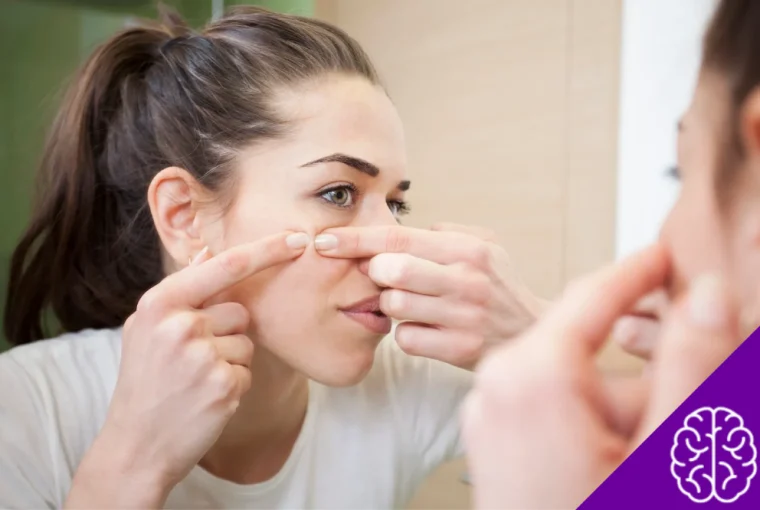You’re scrolling through your feed when it appears: a close-up of a massive pimple, ready to pop. You might feel a mix of disgust and fascination, but you can’t look away. Two gloved fingers apply pressure, and then… it happens. That oddly satisfying release. If you’ve ever wondered why millions are captivated by these videos, you’re not alone. Science has a few surprising explanations for this phenomenon.
This seemingly strange obsession has deep roots in our psychology. It taps into the same brain wiring that makes us enjoy horror movies, roller coasters, and even spicy food. From the thrill of a controlled “threat” to the deep-seated satisfaction of resolving tension, the appeal of pimple popping is more complex than it first appears.
Understanding this fascination reveals a lot about our brain’s reward system, our evolutionary instincts, and our relationship with emotions like disgust and relief. This post from the Insight Factory will explore the key scientific theories that explain why so many of us find these videos irresistible.
Pimple Popping Videos: The Horror Movie Connection
One of the most compelling theories links the appeal of pimple-popping videos to the thrill of watching a horror movie.
According to James Sherlock, a researcher with a PhD in behavioral genetics, the physiological response is remarkably similar.
“Watching pimple-popping videos or horror films elicits similar physiological responses,” Sherlock explains. “The brain prepares to react to something we have evolved to detest, but in a controlled, safe manner.”
When you watch a scary movie, your heart rate increases, and you might feel a rush of adrenaline. You experience fear and suspense, but you know you aren’t in any real danger.
Your brain gets to go on an emotional roller coaster from the safety of your couch. Pimple-popping videos work the same way.
They trigger a sense of disgust—an emotion designed to protect us from disease—but because it’s on a screen, there’s no actual threat. This safe exposure to a negative stimulus can be thrilling for the brain.
The Brain’s Pleasure and Disgust Centers
To better understand this, scientists at the University of Graz in Austria conducted a study in 2021. They developed the “Pimple Popping Enjoyment Scale” (PPES) to measure how much individuals enjoyed this type of content.
After surveying over 500 people, they selected a group of women to watch pimple-popping videos while their brain activity was monitored.
The results were fascinating. Participants who scored high on the enjoyment scale showed more activity in the nucleus accumbens, a brain region associated with pleasure and reward. Simultaneously, they showed less activity in the insular cortex, which processes disgust.
This suggests that people who enjoy these videos are better at regulating their sense of disgust. They can suppress the “yuck” factor and instead focus on the feeling of satisfaction that comes with the “pop.”
For them, the brain’s reward system overrides the natural aversion, turning a potentially repulsive experience into a pleasurable one.
The Power of Morbid Curiosity
Another key factor is “morbid curiosity,” the innate desire to understand threatening or disturbing situations. This drive pushes us to look at things we know we shouldn’t, from car accidents to gruesome scenes in movies. Why? Because our brains are wired to seek information and resolve uncertainty.
A pimple-popping video presents a clear problem: a build-up of pressure under the skin. This creates a sense of tension and anticipation. The climax arrives when the pimple is popped, and the pus is released.
This resolution provides a feeling of relief and finality, activating the brain’s reward pathways. It’s the same satisfaction you feel when the hero finally defeats the villain at the end of a movie.
Recent 2024 research from the University of Graz suggests this curiosity has an evolutionary purpose. In our ancestral past, paying attention to wounds, diseases, and signs of infection was crucial for survival. Understanding these threats helped our ancestors learn how to avoid them.
Today, that same instinct draws us to watch pimple-popping videos on TikTok or YouTube, allowing us to observe a “threat” from a safe distance.
Benign Masochism: Finding Pleasure in Discomfort
The concept of “benign masochism” also helps explain this phenomenon. Coined by psychologist Paul Rozin, it describes the enjoyment of negative emotions in a safe context.
It’s why people enjoy riding terrifying roller coasters, eating painfully spicy peppers, or watching sad movies that make them cry.
“These experiences are initially unpleasant, but without any real danger,” the Austrian study notes. “Watching pimple-popping videos allows people to engage with negative emotions without risk.”
The initial feeling of disgust is the “masochistic” part, but because there’s no real threat, it becomes “benign.” The brain learns to reframe the negative feeling as a source of excitement and pleasure.
This controlled exposure to something unpleasant can be a thrilling way to explore the boundaries of our own emotions. The mind essentially thinks, “This is gross… but I can’t stop watching.”
Why It All Matters!
The combination of a controlled thrill, a regulated disgust response, morbid curiosity, and benign masochism helps explain why pimple-popping videos have become so popular. They are more than just a gross trend; they tap into fundamental aspects of human psychology.
These videos provide a sense of resolution and relief, activating our brain’s reward centers in a predictable way. The build-up of tension and its satisfying release offer a mini-catharsis that can feel strangely relaxing.
So, the next time you find yourself mesmerized by a pimple-popping video, know that your brain is just doing what it’s wired to do: seeking resolution, managing threats, and finding pleasure in the most unexpected places!


